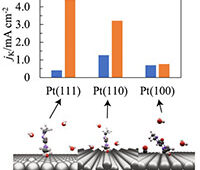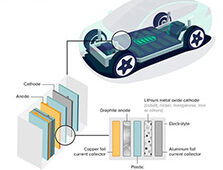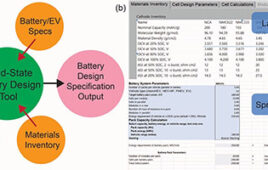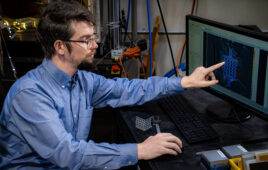Physics researchers at the University of Kansas
have discovered a new method of detecting electric currents based on a process
called second-harmonic generation, similar to a radar gun for electrons that can
remotely detect their speed.
Their new idea could improve many present-day
renewable energy technologies—like solar cells, batteries, artificial
photosynthesis, and water splitting—that rely on detection of electric
currents. Further ahead, sensors that better read the motion of electrons could
underpin next-generation cell phones and computers.
“So far, most techniques to detect electric
currents are very much like measuring the speed of a car by tracking it with a
camera, and later analyzing how the position changes with time,” said Hui Zhao,
assistant professor of physics at KU. “But for moving cars, a radar gun is a
much better tool, since radar allows us to instantaneously measure the speed.
Yet, for electrons, there has been no tool available that allows us to directly ‘see’ the motion like this.”
Zhao collaborated on the research at KU’s
Ultrafast Laser Lab with Judy Wu, University Distinguished Professor of
Physics, and graduate students Brian Ruzicka, Lalani Werake, and Guowei Xu.
Their findings recently were published in Physical
Review Letters.
The researchers discovered that by shining
light from a high-power laser onto a material that contains moving electrons,
light of a different color is generated. They looked at thin crystals of
gallium arsenide—a material commonly used in high-speed electronics and
photonics. By applying a voltage across the crystal, they set electrons to move
through it with a specified speed. By illuminating the crystal with an infrared
laser pulse, invisible to human eyes, they found that visible red light was
produced—a signature of the second-harmonic generation process.
Additionally, they observed that the
brightness of the red-light scales with the speed of electrons. When the
electrons have no directional motion, no red light comes out.
“By detecting the red light, one can
accurately determine the speed of electrons without making any contact with the
sample and without disturbing the electrons,” Zhao said. “Before this study, it
was generally known that an electric current has three effects: It can charge
the system, change its temperature and produce a magnetic field. As a result,
all experimental techniques of current detection were based on these effects.
This newly discovered optical effect of currents opens up a new way of using
lasers to study currents.”
The KU researchers’ experimental
results are consistent with theoretical studies performed by professors Jacob
Khurgin of John Hopkins
University and Eugene Sherman from Spain.




